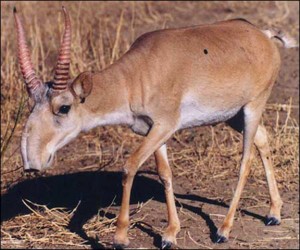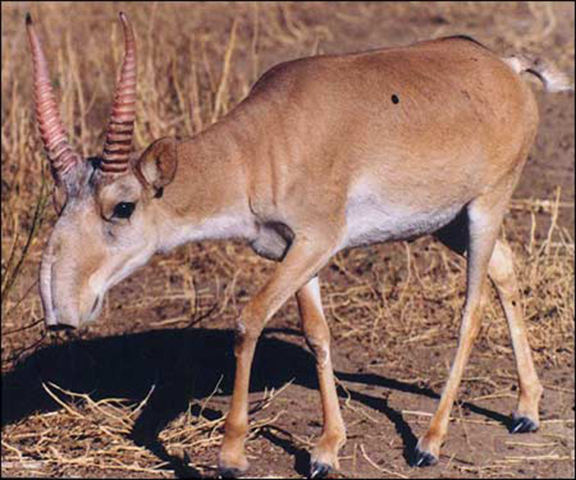ASTANA, (Reuters) – International experts are investigating the sudden deaths of more than 100,000 endangered saiga antelope in Kazakhstan, officials said Wednesday, raising fears that a species that has been around since the Ice Age may be at risk of dying out.
 Around 40 percent of the Central Asian nation’s population of the endangered saiga antelope have died in the past two weeks. Animal health experts suspect a respiratory disease may be to blame.
Around 40 percent of the Central Asian nation’s population of the endangered saiga antelope have died in the past two weeks. Animal health experts suspect a respiratory disease may be to blame.
Kazakhstan, the world’s ninth-largest country by area, is home to around 90 percent of the world’s population of the saiga, recognizable by their lyre-shaped horns and bulbous nose.
“The death of the saiga antelope is a huge tragedy,” said zoology scientist Bibigul Sarsenova. “Should this happen again next year, they may simply disappear.”
The International Union for Conservation of Nature, a global coalition of governments and environmental organisations, says the saiga antelope is a “critically endangered” species.
An estimated 300,000 saiga roamed across the Kazakh steppes on May 11, when the first dead antelope was discovered. By May 27, nearly 121,000 carcasses had been found in three huge areas of their usual habitat, Agriculture Ministry officials said.
“We believe the cause of the deaths is pasteurellosis,” Yerzhan Madiyev, deputy head of the ministry’s veterinary committee, told a news conference.
Pasteurellosis is a bacterial disease that can infect humans and cattle, rabbits, cats and dogs. Its bacteria occur naturally in the upper respiratory tract, but can be harmful when the immune system is compromised.
Kazakh scientists are testing soil, air and water to try to solve the mystery of the mass deaths, said Bagdat Azbayev, chairman of the Agriculture Ministry’s forestry and wildlife committee.
Experts from Britain, Germany and the World Organisation for Animal Health have come to help Kazakh scientists investigate, he said.
Huge herds of saiga once roamed the earth alongside the wooly mammoth and the sabre-toothed tiger. The mammoth and tigers died out but the saiga became prized for its delicious meat, which resembles succulent lamb.
There were more than 1 million saiga in the 1990s, but by 2003 poaching and disease slashed their numbers in Kazakhstan to 21,000, Azbayev said.










